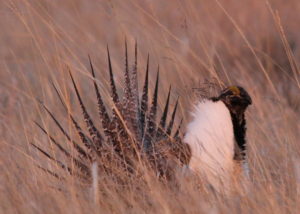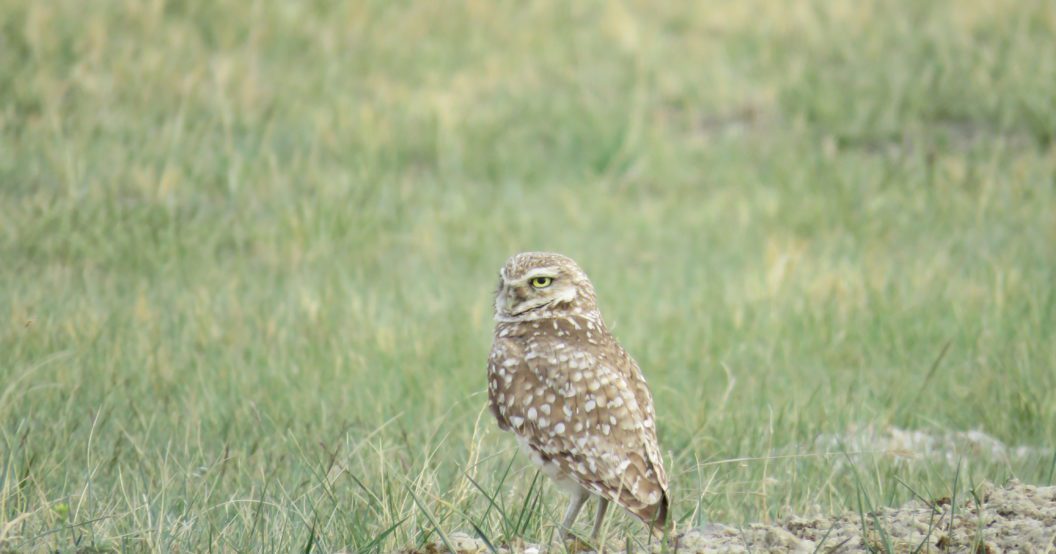By Brad Downey – Senior Wildlife Biologist, Alberta Conservation Association
The sounds of birds fill the air as you step out onto the grasslands; your arrival wakes up a burrowing owl that comes out of its burrow and glances at a cow / calf pair as they walk by. John, the rancher, watches as they walk off as he is always concerned for their welfare, and we start to talk about the moisture carried forward from the spring runoff and the wildlife that make their home on his cattle ranch.
Cattle grazing within the Great Plains of North America is vital for sustaining plant diversity and wildlife habitat. This vast landscape has evolved with grazing animals over thousands of years. Remaining tracts of grasslands are still intact thanks to ranching operations like John’s that sustain the balance of nature with well managed cattle grazing. Not surprisingly these habitats are often the most diverse and heavily used land by wildlife as many wildlife species are closely associated with native grassland habitat. Cattle play a vital role in the management of this habitat as many of these wildlife species need varying levels of structure (vegetation heights), and litter (dead plant material from past years growth) in which to build their nests and raise their young. Cattle grazing provides this mosaic of structure and litter within pastures that are sought after by grassland birds from Sprague’s pipits to thick-billed longspurs.
A well managed cattle ranch in the grasslands goes hand in hand with wildlife and listening to those that have been on the land for several generations is vital for conservation groups hoping to gain more insight. This generational insight is the backbone of conservation in these systems and several grassland dependent species would otherwise be further diminished, or dare I say nonexistent if these operations no longer existed. Working in Alberta with several ranching families gives you an appreciation for the work they do and the vital link they provide for the wildlife that call this home. Burrowing owls, greater sage grouse, Sprague’s pipit, and ferruginous hawks all rely on cattle operations to maintain their habitat. Having long term relationships built on mutual trust and respect with those managing the land 365 days a year allows collaborations to ensure these wildlife species can continue to be found in our grasslands.
This generational insight is the backbone of conservation in these systems and several grassland dependent species would otherwise be further diminished, or dare I say nonexistent if these operations no longer existed. Working in Alberta with several ranching families gives you an appreciation for the work they do and the vital link they provide for the wildlife that call this home. Burrowing owls, greater sage grouse, Sprague’s pipit, and ferruginous hawks all rely on cattle operations to maintain their habitat. Having long term relationships built on mutual trust and respect with those managing the land 365 days a year allows collaborations to ensure these wildlife species can continue to be found in our grasslands.
As we celebrate World Wildlife Day please remember that many of these wildlife species call the grasslands home and for most grassland species, home is on a cattle ranch.
Learn more about Alberta Conservation Association and World Wildlife Day
